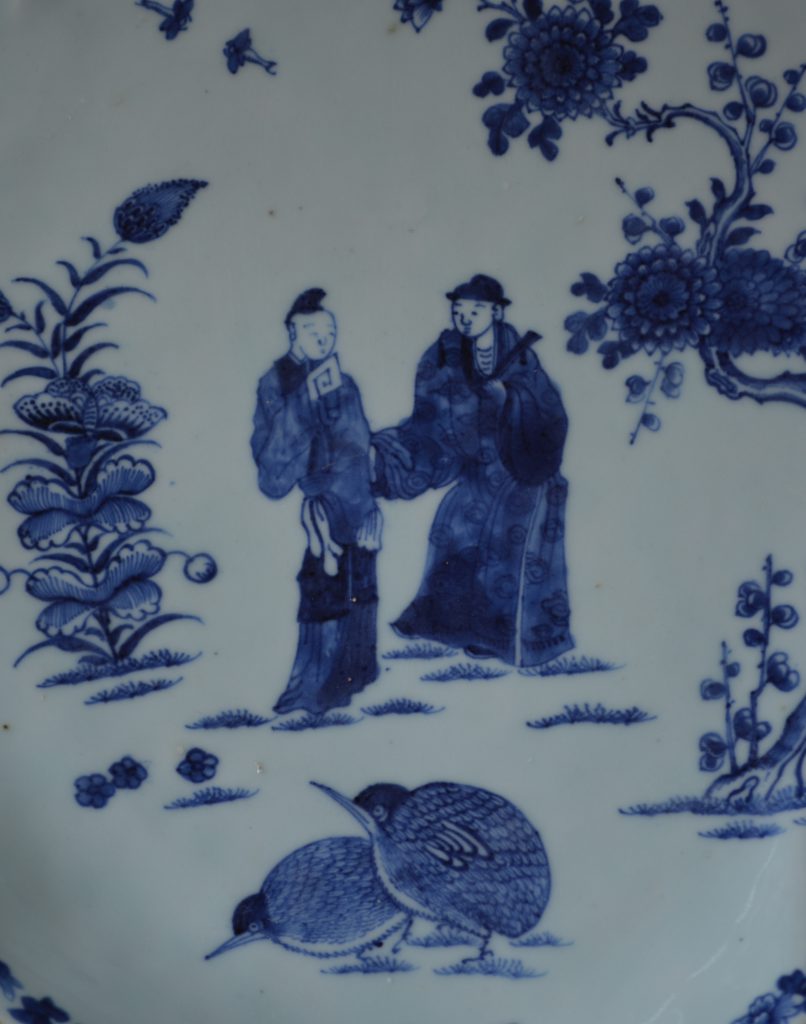
A Very Large Qianlong Porcelain Kakiemon Style Leaf Shaped Dish, Chinese Export Porcelain c. 1760 – 1775.
A very Large Chinese Export Porcelain Dish, Qianlong Period c.1760-1775. This Large Blue and White Porcelain Leaf Form Dish is Based on Meissen Porcelain in the Japanese Kakiemon Style. The Design is of Two Quail with Millet and a Well Dressed Couple are in the Middle.
SOLD
- Condition
- A small shallow chip, almost just glaze, on the lower rim c.8 x4 mm. A firing crack to the right side.
- Size
- Length : 42.8 cm (16 3/4 inches). Width : 34.4 cm (13 1/2 inches).
- Provenance
- N/A
- Stock number
- 23539
- References
- For an almost identical pair of blue and white Chinese Export porcelain dishes, also with one dish of a deeper blue, see : The Two Quail Pattern, 300 Years of Design on Porcelain, A History of the Pattern and a Catalogue of the Porcelain Factories from the East and West (Dr. Chris Girton, Louvic Publications, 2004. ISBN 0-9547195-0-6) page 24, fig.15. A pair of dishes of this form and size see : Fine Chinese Export Porcelain, Jade Carvings and other Hardstones, Sotheby`s London, 13th November 1979, lot 87.
Information
Kakiemon Porcelain :
Kakiemon decoration is usually of high quality, often delicate and with well-balanced asymmetric designs. The designs were normally quite sparse emphasizing the fine white porcelain body known in Japan as Nigoshide (milky white). The opaque white milky Nigoshide body was used on the finest pieces, it appears that it was reserved for fine quality enamelled decoration. Kakiemon porcelain was decorated with a great variety of imaginative designs which include elements such as the `banded hedge`, `flying squirrel`, and the `Quail and Millet` design. The `Three Friends of Winter` were also a very popular group of designs, other subject taken from nature include flowers (especially the chrysanthemum, the national flower of Japan) as well as birds and rock-work. Figural subjects such as the `Hob in the Well` were also popular. This design illustrates a Chinese folk tale where a sage saves his friend who has fallen into a large fish-bowl by throwing stones at it, braking open the pot. Banded-Hedges were a formal device within Japanese traditional gardens, they were often incorporated in designs, includes `The Three Friends of Winter` (Pine, Bamboo and Prunus). These three plants signify perseverance, as neither the pine nor the bamboo shed their leaves in winter and the plumb (Prunus) flowers at the very end of the winter, heralding the arrival of spring.







